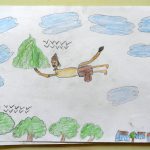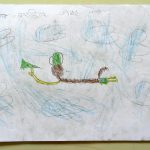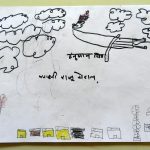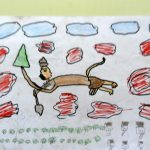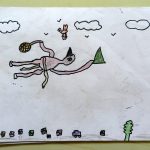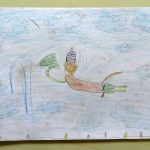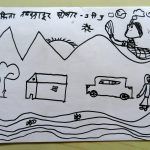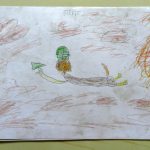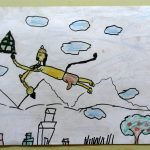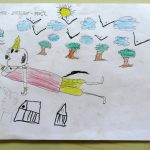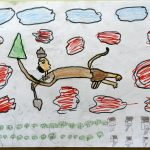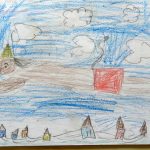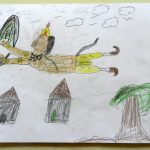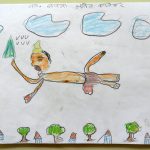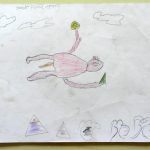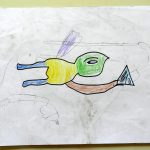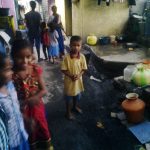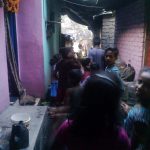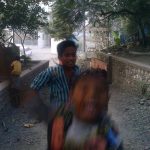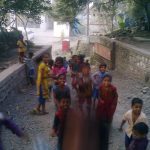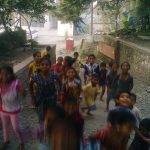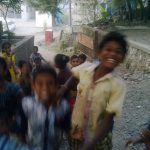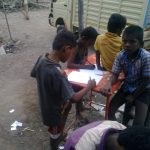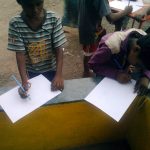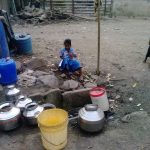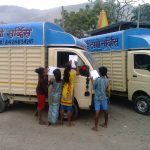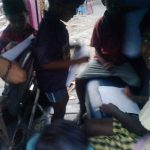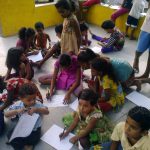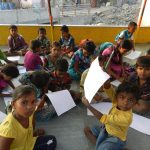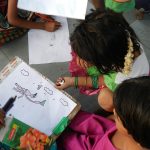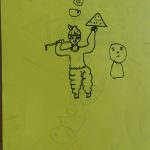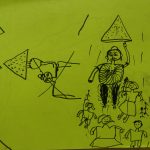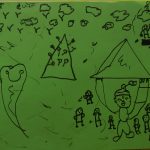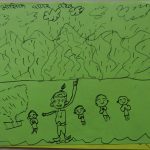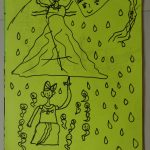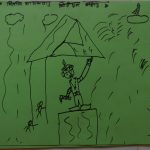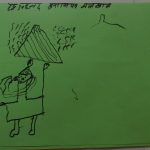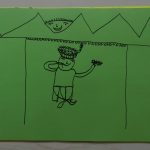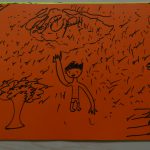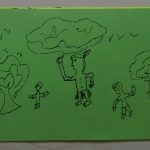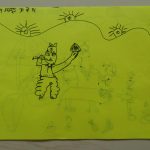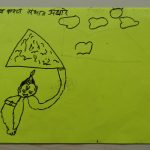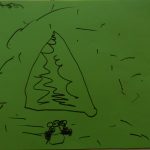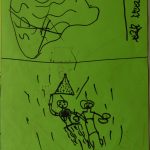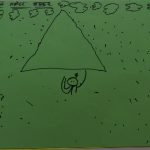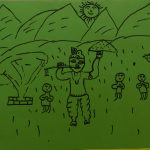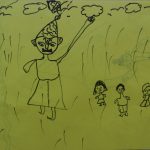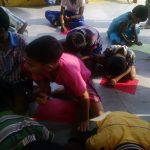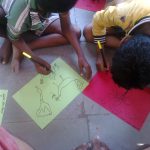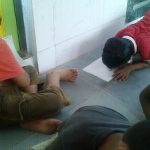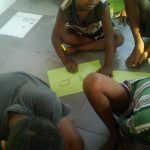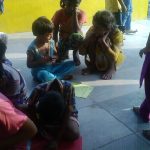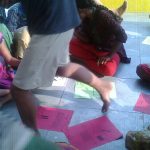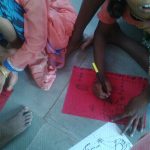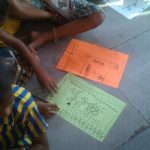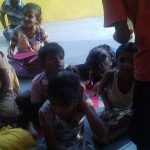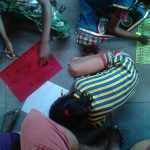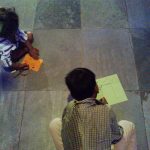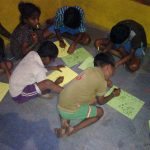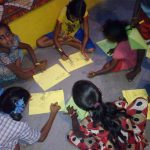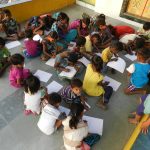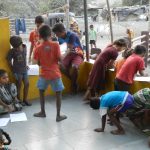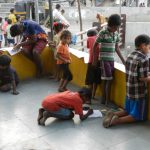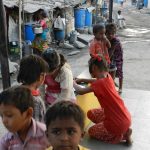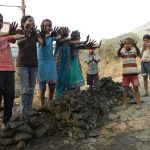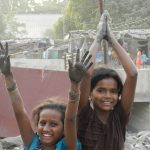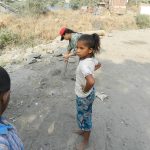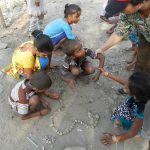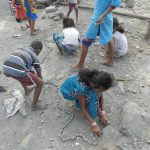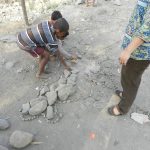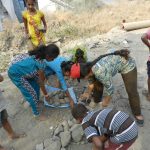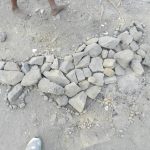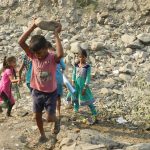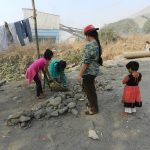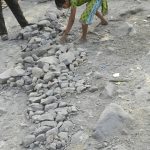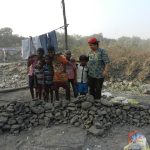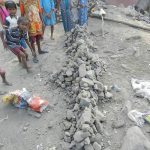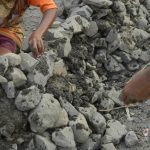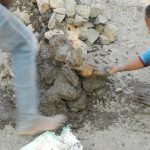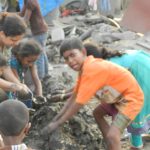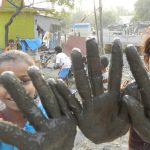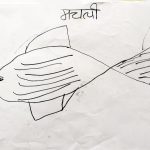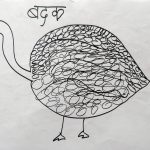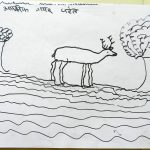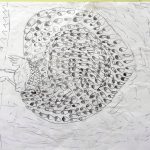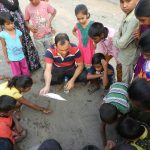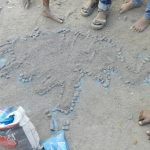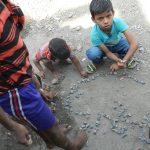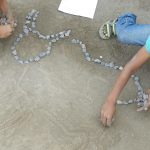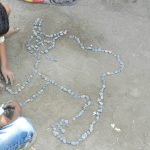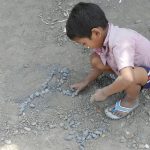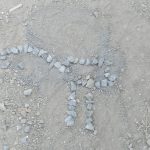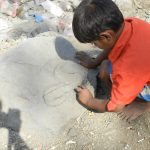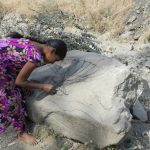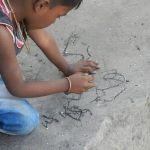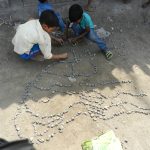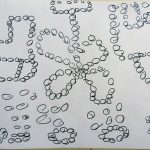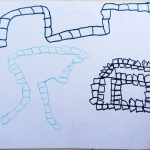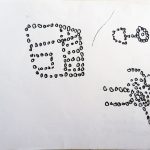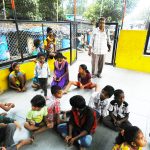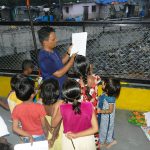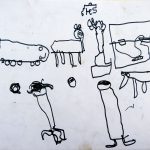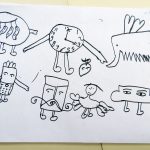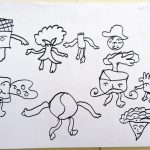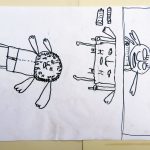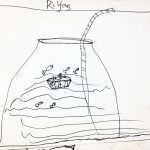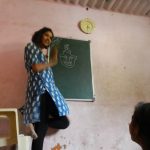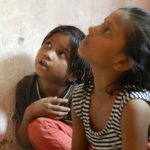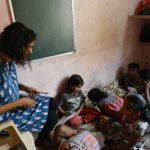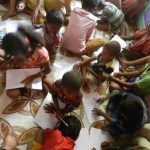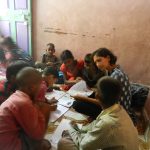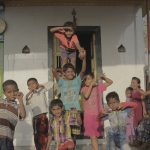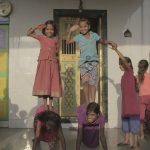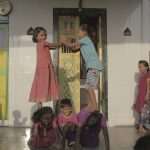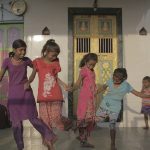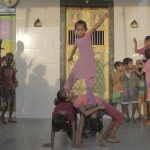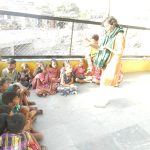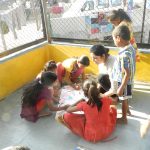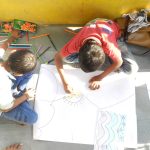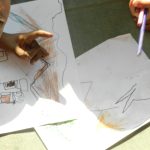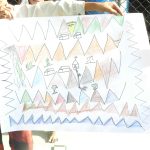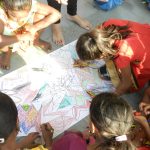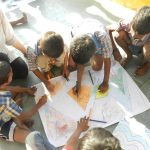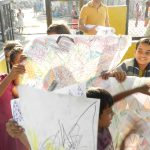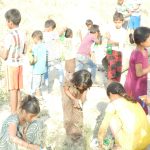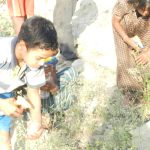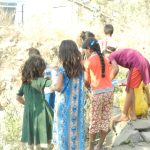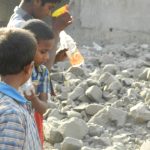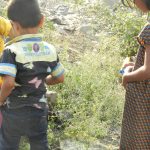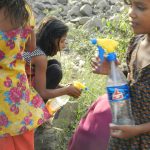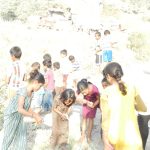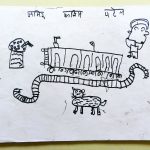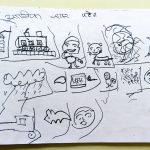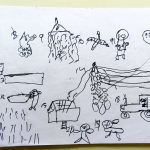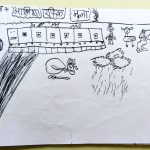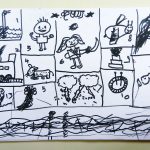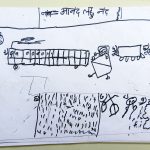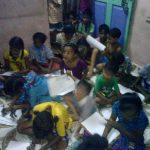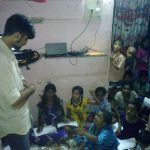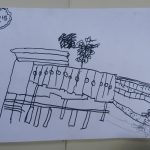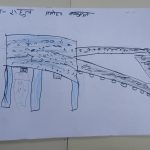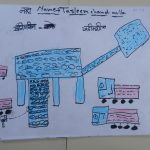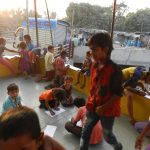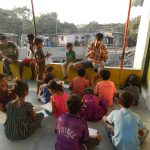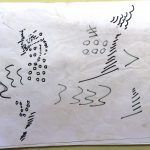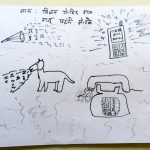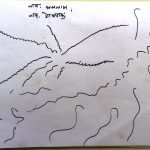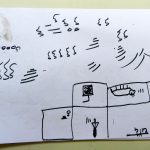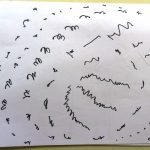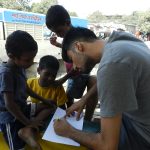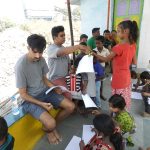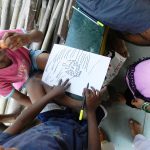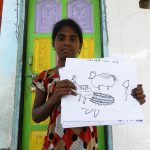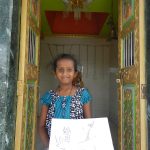GoC [Geographies of Consumptions]: Wreckage Point
I attempt to hook up by means of storytelling workshop which is associated to moving mountain for service by characters in Indian Mythological stories such as Lord Hanumana and Dronagiri Mountain a story from Ramayana and Lord Krishna and Govardhan Mountain- Parag Kashinath .Tandel (sculptor)
Workshop by Kadambari Koli
The workshop commenced from the act of mapping the top elevation of the Parsik hills, which stretches from Mumbra,Thane to Kharghar, Navi Mumbai,India .
The notion evoked through the shattered pieces of stone which were formerly element of the mountain which was seen in the landscape. The notion to ‘Constructiondeconstruction’.
The festivity of Diwali knocking the door and the tradition of constructing forts which act as landmarks throughout the history of Maharashtra, India lurking into the minds of the young ones around this period definitely gave it a finishing touch.
– Kadambari Koli-Tandel (visual artist
Workshop by Apurva Nandy
I wanted the children to get engaged with the environs they live in. children were asked to collect the broken stones and place them one by one following the lines that they drew on the land with sticks and their fingers. The idea was to make them go through calculative approach of building an image that involved their minds and also bodily movement – Apurba Nandi (sculptor)
Workshop by R B Holle
Workshop by Shubhangi Singh
While observing a few sessions before the day I was to directly engage with the children over a session of my own, I noticed that for the children- their strength certainly lay in their numbers. They would feed off each other’s energy- that, was their boon and their bane. Bane because it was easy for the children to be influenced by each other’s imaginations leaving little room for their own to surface. In the first session with the children, I wanted to understand how we could, together, pick our own individual brains and develop an imagination, that was, exclusively ours.
In the workshop about creating our own, I asked the children to find inspiration from their environment/ experience and pick a few everyday objects- imagine a combination of say, a comb, add animal limbs to the teeth of the comb, add elephant ears to the spine of the comb- perhaps add a furry tail? Now what’s that? That’s not a being that exists in our world but because it has been given form, it does now. The intention of using few odd objects to give birth to one’s own fantastical being was to see if we could, individually, give an unique identity to our imagination & translating that imagination onto to tangible creation. The intention was to also break the possibility of imitation. The chances, I thought, that for any two kids to use a book with wings and a tree trunk for body was absolutely zero. But ofocurse, there was no going around the ‘inspired’ imitation – but thanks to the children, some brilliant new beings were born that evening.
Taking from the former session with the children where the children individually (well, almost) created new forms, I wanted to explore the possibility of working with teams to represent forms.
Through a performance oriented exercise, the idea was to probe our minds and our bodies into creating forms that our bodies (together) almost never naturally falls in. The attempt was to take the previous session forward by now including working with teams to the equation. Through the formations of the four bodies (teams for four children) by convoluting/twisting/climbing/hanging their bodies with one anothers, the intention was to not recreate any existing form, but to altogether imagine new forms by discovering new ways our bodies could turn in.
The result of this exercise was not aligned with what I had imagined it would be like. The children, I thought, although extremely enthusiastic found it very difficult to unlearn their practice and their training with engaging with their bodies as a team. Almost each team with perhaps just a couple of exceptions, immediately formed the “dahi hundi pyramid” structure. No amount of explaining or attempts to divert that approach altered the results – shubhangi singh ( cinematographer and photographer )
Workshop by Minal Damani
Loss of landscape and cleansing, both are about the ‘actions’ and how children can understand and get engaged to the outer world in playful and creative way – Minal Damani (Visual artist)
LOSS OF A LANDSCAPE:The idea was to make children aware of the surrounding they live in and how that place is consumed and reduced in to a raw- material to create new structures. The activity was to reduce the mountains into fragments through the act of drawing mountains on paper and then tearing that drawing into pieces. In a way this workshop turned out to be a parallel act to the process of mining.
CLEANSING: Cleansing is about the act of purifying trees. Trees hold the layers of dust reminicent of ongoing cycle of creation and destruction. Children sprinkled water on plants from spray bottles . The tender gestures of cleaning each and every leaf with their hands turned out to be the focal point of the workshop. This act transformed the plants in to bodies that are mute witnesses to their surroundings.
Workshop by Kush Badhwar
Hear and Draw is a workshop series which explores connections and disparities between our senses, our surroundings and each other. In the first part, drawings were made while listening to found/collected/pre-existing sounds played from speakers. In the second workshop, drawings were made while listening to our surroundings. In the third workshop, we formed pairs in which one of us would generate a sound and the other would draw from it – Kush Badhwar (Film maker and resercher)



